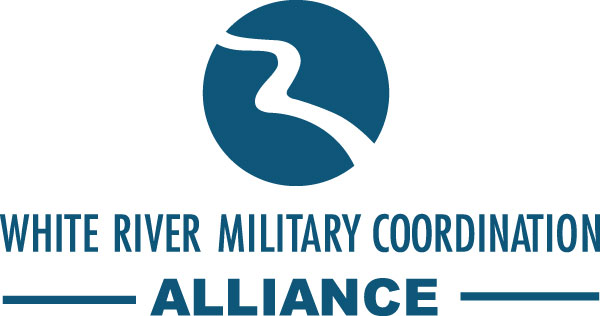WESTGATE@CRANE Technology Park, (Odon) Indiana — The enrollment period is currently open for several voluntary conservation incentive programs that provide financial incentives for landowners and agricultural producers in the communities that neighbor NSA Crane.
The USDA Natural Resources Conservation Service of Indiana recently set deadlines for two voluntary conservation programs, the Environmental Quality Incentives Program (EQIP) and Conservation Stewardship Program (CSP). Nearly 80% of the lands surrounding NSA Crane are in agricultural and natural land uses, and these programs provide financial incentives to help landowners receive benefits while being strong stewards of their lands.
“Conservation Incentive programs help protect open and natural spaces that buffer installations to avoid land use conflicts by preserving agricultural lands and habitat for wildlife,” said Mark Dobbs, Community Planning and Liaison Officer at NSA Crane. “They also help sustain installation capabilities while protecting the strategic value of NSA Crane to the Department of Defense, State of Indiana, and local community. Through Conservation Incentive programs, landowners and land trusts may leverage funds with outside organizations, including the Department of Defense, interested in preserving land. An example includes voluntary easements created through this cost-sharing approach that allow interested landowners to maintain existing agricultural and natural land uses while ensuring compatibility with adjacent military lands.”
Conservation Program Enrollment Opportunities
Conservation programs that members of the communities surrounding NSA Crane may be eligible to enroll in include:
- Environmental Quality Incentives Program (EQIP): EQIP is a voluntary conservation program available for agricultural producers. Participants receive financial and technical assistance to install conservation practices that reduce soil erosion and sedimentation, improve soil health, improve water and air quality, and create wildlife habitat. The application deadline for EQIP is Dec. 18.
- Conservation Stewardship Program (CSP): CSP is a farm bill conservation program that helps producers who are already practicing good stewardship to take their natural resource management to the next level. The deadline for CSP in Indiana is Jan. 8.
- Indiana Private Lands Access Program (IPLA): This program offers financial incentives to landowners who allow controlled public access hunting on their private lands. Eligible landowners who enroll in the program work with a wildlife biologist to develop a management plan.
- Agricultural Conservation Easement Program (ACEP): This program provides financial and technical assistance to help conserve agricultural lands and wetlands and their related benefits. Landowners partner with interested land trusts and conservation organizations to provide long-term preservation and stewardship of their lands.
About Conservation Incentive Programs
How neighboring lands are used around a military installation is an important part of making sure the installation can fulfill its role within the U.S. military. Crane’s role includes conducting realistic weapons system testing to make sure our men and women in uniform and their equipment are fully prepared for real-world combat. However, these activities can be incompatible with civilian land uses.
Protected lands enrolled in a conservation program are not owned by the military or used for military training or testing.
For the military, they serve as compatible neighboring lands and help:
- Protect small arms and ordnance testing and demilitarization missions that produce significant amounts of noise and vibration
- Prevent workarounds that would reduce test capacity
- Preserve current and future missions while ensuring strategic value
For the community, Conservation Incentive programs:
- Protect agricultural lands, natural and forest lands
- Preserve habitats for threatened, endangered and at-risk species
- Protect water quality and supply
- Affords opportunities for economic prosperity and compatible growth
About the Conservation Incentive Toolkit
A Conservation Incentive Toolkit was developed by the White River Military Coordination Alliance in 2019 as an online mapping tool to help identify opportunities for land conservation in the communities that neighbor Crane and Lake Glendora. Landowners can use the tool to find additional potential conservation programs for their agricultural, natural, and forestland parcels.
“This self-service tool connects landowners to conservation programs while promoting military mission protection and environmental stewardship,” Dobbs said. “It has enabled the community and all of the partners and landowners to communicate in a truly collaborative way, while ensuring compatible development.”
Watch the Conservation Incentive Toolkit Webinar or visit the Alliance’s Support Topics page to learn more about using the mapping tool.
###
About the White River Military Coordination Alliance
The Alliance is a community organization that was formed in 2018 to promote positive development and growth in the communities that surround Naval Support Activity Crane and Lake Glendora Test Facility (Daviess, Greene, Lawrence, Martin and Sullivan counties) by facilitating two-way communication between the communities, counties, state agencies, and NSA Crane. The focus of our 24-member alliance is to create opportunities for economic prosperity and land conservation in the region, safeguard Crane’s military mission, and protect community health and safety. We would encourage the community to take our survey about Crane at WRMCAlliance.com. Follow the Alliance on Facebook, Twitter, and LinkedIn.
